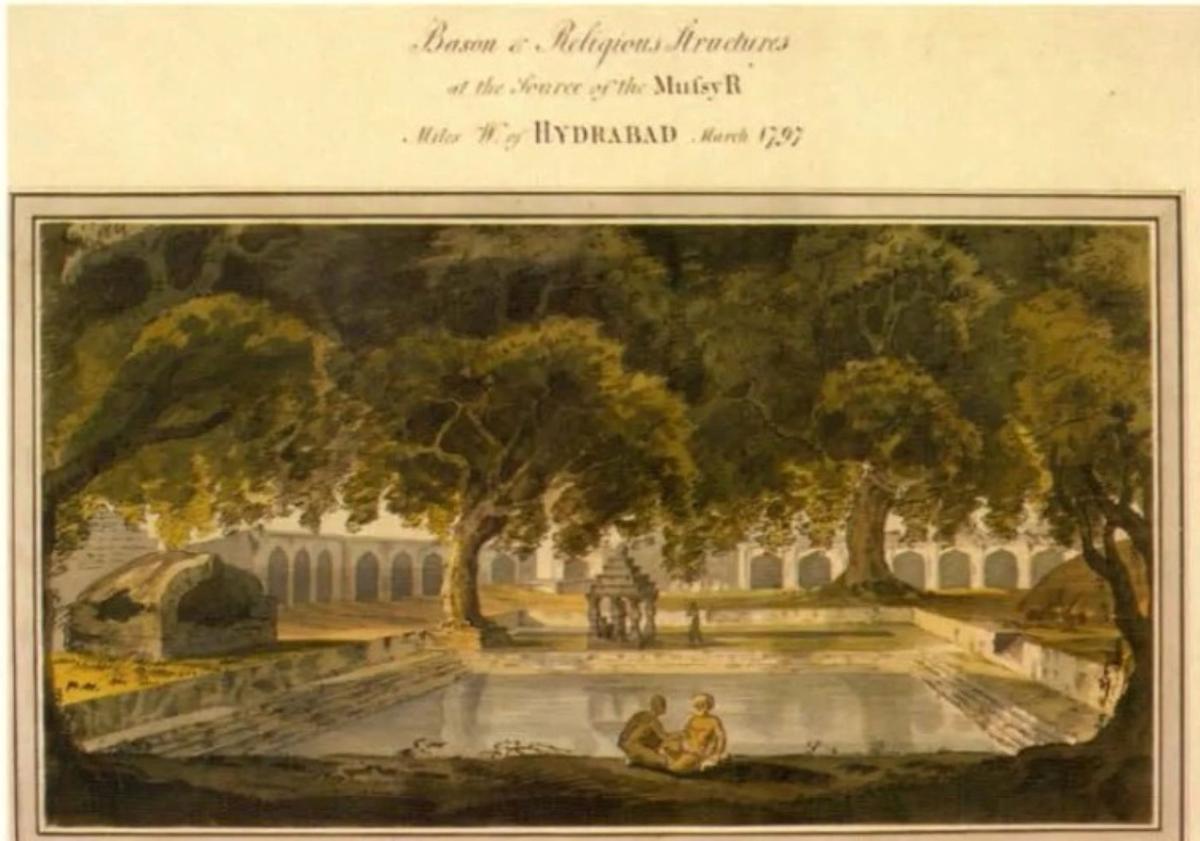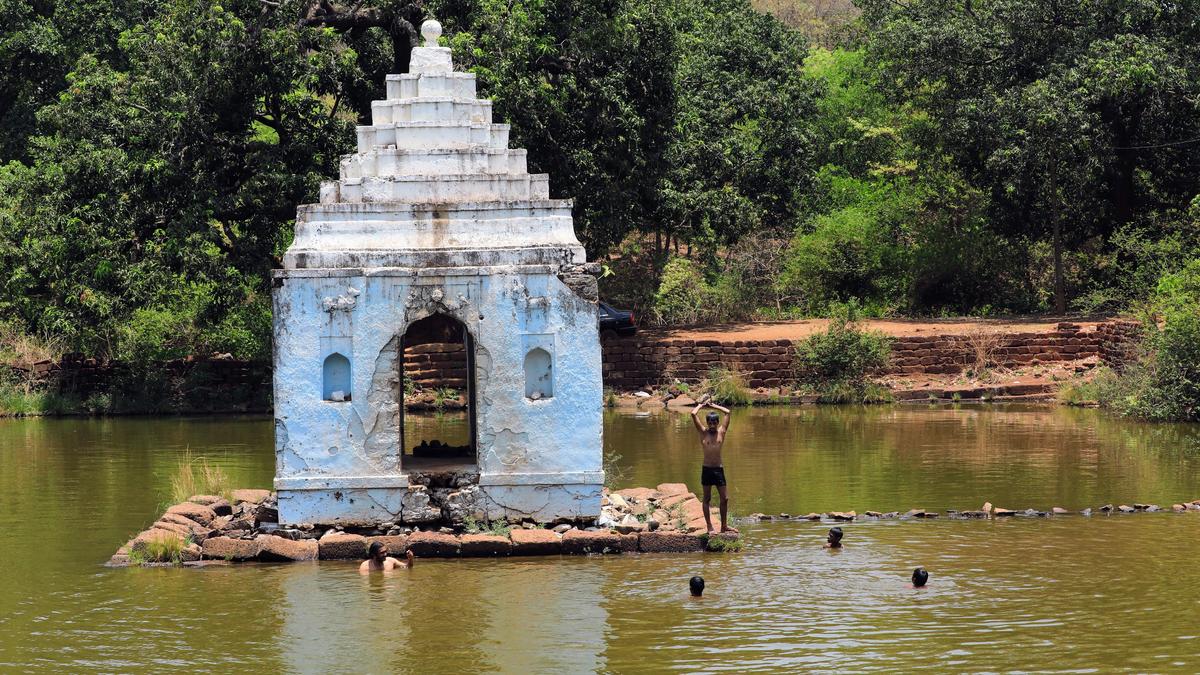
The pond inside the Vikarabad forest that is the source of the River Musi and is a watering hole for animals and a bathing space for children in the neighbouring villages.
| Photo Credit: Serish Nanisetti
Every summer afternoon, the temple pond of Ramalingeswara Swamy temple in Pudur echoes with laughter, splashes of water and calls of peacocks. Located at the foothill of the Vikarabad ridge, the pond is the originating point of the Musi River that flows through Hyderabad and onwards to Nalgonda. The young men and women, who use the pond, hail from Thippapur, Pudur, Cheelapur, Kothapally, Gudupally and other villages that ring the sacred pond that has a small temple with a crack running through the middle. At the edge of the pond is the Shiva temple where devotees troop during Shivaratri and other festivals. A 1797 colour painting shows the pond, locally known as gundam, surrounded by tall trees and an arcade of niches. The scene has not changed much since then.

A 1797 painting identifying the source of Musi in the forests of Vikarabad.
| Photo Credit:
Special Arrangement
As the walls of the Indian Navy’s Very Low Frequency Station go up, the access to pond is going to get limited. At the foundation laying ceremony a few days back, Chief Minister A. Revanth Reddy made a plea to Defence Minister Rajnath Singh that the age-old temple remain accessible to the people of the area. “Devotees will not create trouble to the temple. We respect the sentiments and faith of the people and hence permit people to visit the temple,” the Chief Minister appealed to the Defence Minister at the function. While many protected sites in India have religious places within them, and the armed forces allow people to visit places, the easy relationship between the temple pond and the village will change forever. And not just people.
“The wall will cut the easy passage of wild animals in the region. The Damagundam temple site is a watering hole for animals. I have seen blackbuck, neelgai and other animals sipping water in the lake. How the walling up of the forest will impact wildlife has to be studied,” says G. Venkatesh who lives in Manneguda.
Originating in this rocky wilderness, the River Musi flows through Hyderabad gathering ever more velocity due to the terrain before it reaches Nalgonda and merges with the Krishna River. In this short stretch of 240 kilometres, from its birthplace near Pudur Village in Vikarabad before merging with the Krishna river in Vadapally, the river marks out its identity as the river of Telangana. “The earliest historical reference I could find for the Musi River is in the Hathigumpa inscription of Kharavela from 1st century BC. The king refers to how he burnt down Musikanagara or the town on the River Musi,” says Prashant, a historian from Warangal, who has made an in-depth study of Telangana culture.
“The Musi River is part of Telangana’s identity. There are Bathukamma songs about it,” says Prashant, referring to the work of Indologist Biruduraju Ramaraju. In the map drawn by historian B. N. Shastri, he refers to Musikanagara or the town on the banks of the River Musi during the Satavahana era (1st Century BCE to 2 Century CE).
A much later reference is in an inscription from Rashtrakutas era dating from 769 CE. Which is a land grant to a Brahmin named Jaggu by the Rashtrakuta Prince Govindaraju II after defeating the Vengi king from his war camp site located near the confluence of Krishna river and the Musi River.
“The name Muchukunda which was used for a short time dates from Kakatiya era where rivers were named after saints,” informs Prashanth who surmises that the present day Vadapally is the Musikanagara and was used as a waterway for navigation and transport. Bolstering this belief is that recently, historians have unearthed a lighthouse on the Krishna river near Mudimanikyam which is a short distance from Vadapally in Nalgonda on the confluence of the River Krishna and the River Musi.
Once the origin of the river goes behind walls, a part of its identity will be lost.

““The earliest historical reference I could find for the Musi River is in the Hathigumpa inscription of Kharavela from 1st century BC. The king refers to how he burnt down Musikanagara or the town on the River Musi”PrashantHistorian
Published – October 26, 2024 08:25 am IST









